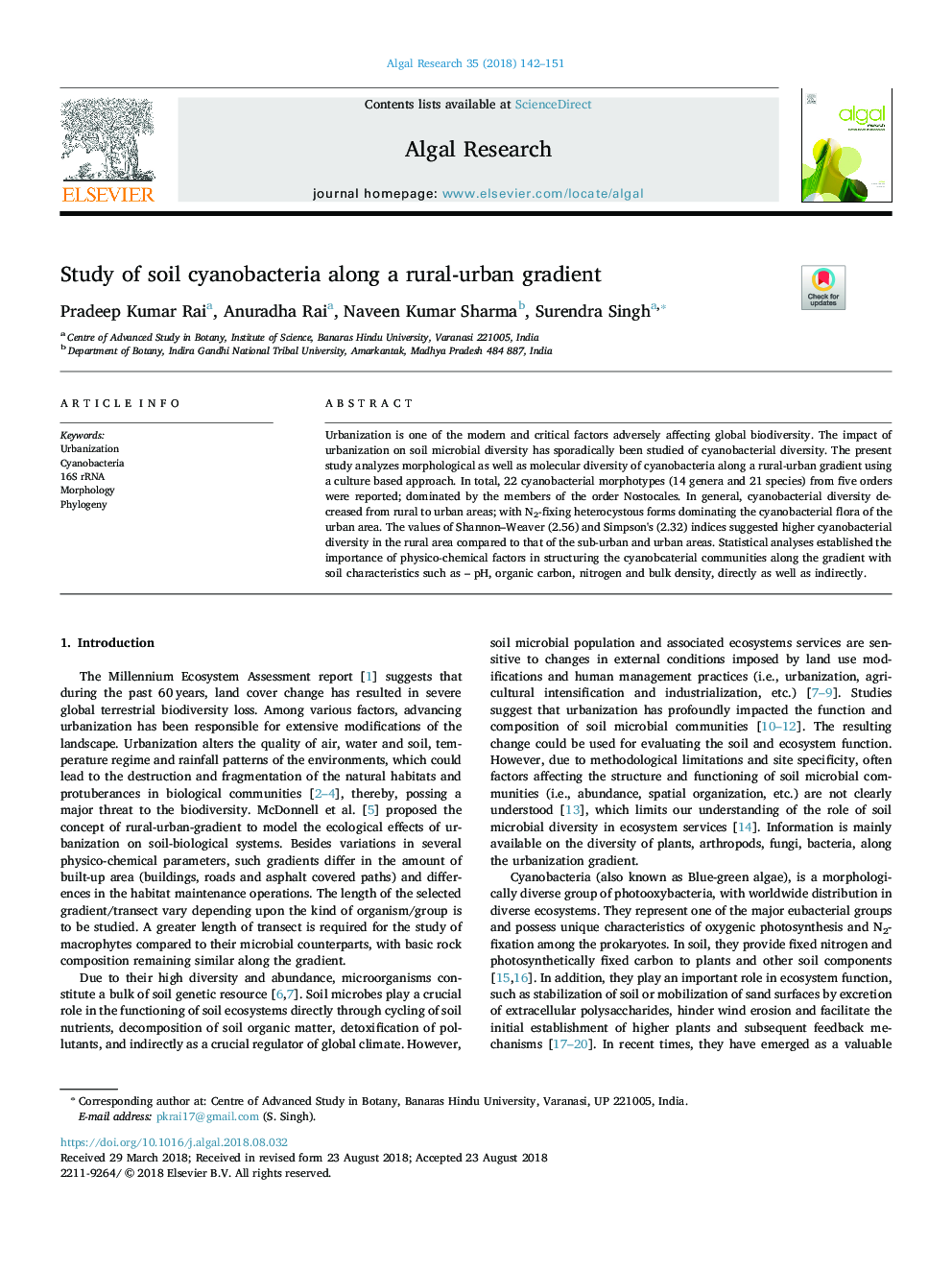| Article ID | Journal | Published Year | Pages | File Type |
|---|---|---|---|---|
| 10128899 | Algal Research | 2018 | 10 Pages |
Abstract
Urbanization is one of the modern and critical factors adversely affecting global biodiversity. The impact of urbanization on soil microbial diversity has sporadically been studied of cyanobacterial diversity. The present study analyzes morphological as well as molecular diversity of cyanobacteria along a rural-urban gradient using a culture based approach. In total, 22 cyanobacterial morphotypes (14 genera and 21 species) from five orders were reported; dominated by the members of the order Nostocales. In general, cyanobacterial diversity decreased from rural to urban areas; with N2-fixing heterocystous forms dominating the cyanobacterial flora of the urban area. The values of Shannon-Weaver (2.56) and Simpson's (2.32) indices suggested higher cyanobacterial diversity in the rural area compared to that of the sub-urban and urban areas. Statistical analyses established the importance of physico-chemical factors in structuring the cyanobcaterial communities along the gradient with soil characteristics such as - pH, organic carbon, nitrogen and bulk density, directly as well as indirectly.
Related Topics
Physical Sciences and Engineering
Energy
Renewable Energy, Sustainability and the Environment
Authors
Pradeep Kumar Rai, Anuradha Rai, Naveen Kumar Sharma, Surendra Singh,
